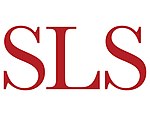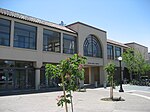Stanford, California

Stanford is a census-designated place (CDP) in the northwest corner of Santa Clara County, California, United States and is the home of Stanford University. The population was 21,150 at the 2020 census.Stanford is an unincorporated area of Santa Clara County and is adjacent to the city of Palo Alto. The place is named after the Stanford University. Most of the Stanford University campus and other core University owned land is situated within the census-designated place of Stanford though the Stanford University Medical Center, the Stanford Shopping Center, and the Stanford Research Park are officially part of the city of Palo Alto. Its resident population consists of the inhabitants of on-campus housing, including graduate student residences and single-family homes and condominiums owned by their faculty inhabitants but located on leased Stanford land. A residential neighborhood adjacent to the Stanford campus, College Terrace, featuring streets named after universities and colleges, is neither part of the Stanford CDP nor owned by the University (except for a few individual houses) but is instead part of Palo Alto.
Excerpt from the Wikipedia article Stanford, California (License: CC BY-SA 3.0, Authors, Images).Stanford, California
Alvarado Row,
Geographical coordinates (GPS) Address Nearby Places Show on map
Geographical coordinates (GPS)
| Latitude | Longitude |
|---|---|
| N 37.4225 ° | E -122.16527777778 ° |
Address
Alvarado Row 579
94304
California, United States
Open on Google Maps





